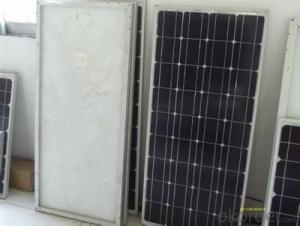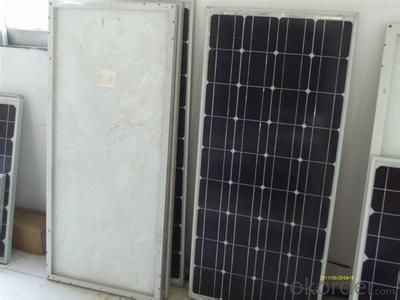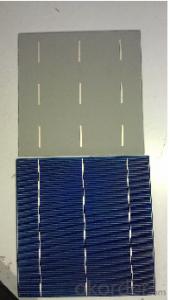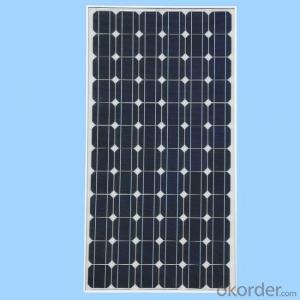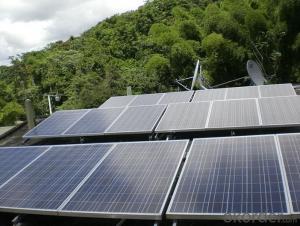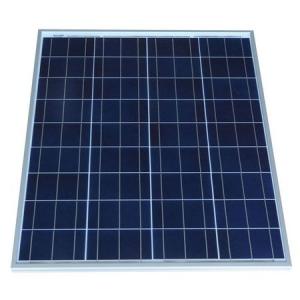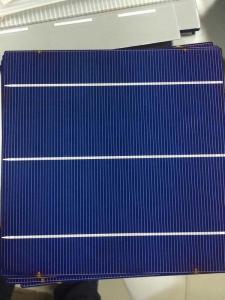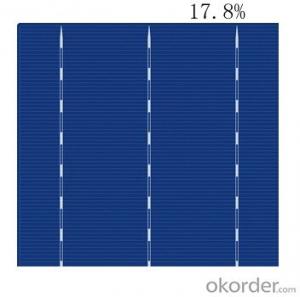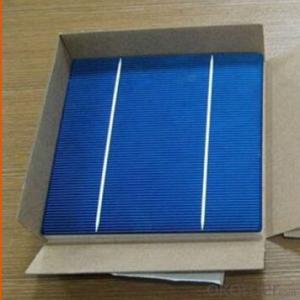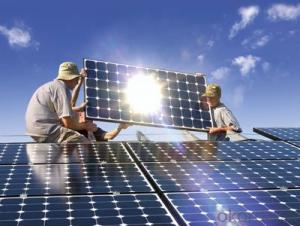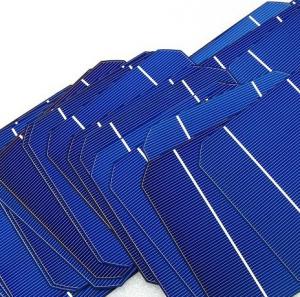CZTSe Solar Cells - Cheap Monocrystalline Solar Cells for Sale
- Loading Port:
- China Main Port
- Payment Terms:
- TT OR LC
- Min Order Qty:
- -
- Supply Capability:
- -
OKorder Service Pledge
Quality Product, Order Online Tracking, Timely Delivery
OKorder Financial Service
Credit Rating, Credit Services, Credit Purchasing
You Might Also Like
Quick Details
| Place of Origin: | Model Number: | ||||
| Material: | Size: | Number of Cells: | |||
| Max. Power: | max power voltage: | max power current: | |||
| cell efficency: |
Packaging & Delivery
| Packaging Detail: | Standard package |
| Delivery Detail: | 30days |
Specifications
200w Cheap Monocrystalline Solar Cells for Sale
1.High efficiency solar cell
2.Mono
3.20W
4.CE,Rohs
- Q: What is the role of anti-reflective coatings in solar cells?
- The role of anti-reflective coatings in solar cells is to minimize the reflection of sunlight that hits the surface of the solar cell. By reducing reflection, more light can be absorbed by the solar cell, thus increasing its overall efficiency and power output. This allows for better utilization of sunlight and helps to maximize the energy conversion process in solar cells.
- Q: How do people price solar cells? Is it based on a specific way of calculating the cost of solar cells?
- The solar cells price is high, because it will take at least 8 years to recover the cost of a the solar cell power supply system.
- Q: How to make solar cells in a scientific way?
- You can ask your teacher and let him show you how to do it.
- Q: What is the cost of solar cells?
- The cost of solar cells can vary depending on factors such as the type of technology, efficiency, and quality. Generally, the cost ranges from $0.30 to $0.80 per watt.
- Q: Can solar cells be installed on sloped surfaces?
- Yes, solar cells can be installed on sloped surfaces. In fact, sloped surfaces can often be advantageous for solar panel installation as they allow for better sun exposure and increased energy generation.
- Q: What is the impact of dust storms on solar cell efficiency?
- Dust storms can significantly reduce solar cell efficiency by blocking sunlight and accumulating dust particles on the surface of the cells. The dust particles act as a barrier, preventing sunlight from reaching the cells and reducing their ability to generate electricity. This can lead to a decrease in power output and overall efficiency of the solar panels. It is essential to regularly clean and maintain the solar panels to mitigate the negative impact of dust storms and ensure optimal performance.
- Q: Can solar cells be used in remote sensing applications?
- Yes, solar cells can be used in remote sensing applications. Solar cells can generate electricity from sunlight, which can be used to power sensors, data loggers, and communication devices in remote sensing systems. This allows for continuous and self-sustained operation of these systems in remote and inaccessible areas where traditional power sources are unavailable.
- Q: How do solar cells handle shading or obstructions?
- Solar cells handle shading or obstructions by bypassing the shaded or obstructed areas and maximizing energy production from the unshaded portions of the cell.
- Q: How do solar cells perform in different geographic locations?
- Solar cells perform differently in different geographic locations due to variations in sunlight intensity and duration. Generally, solar cells perform better in regions closer to the equator with higher solar irradiance. However, solar cells can still generate electricity in less sunny locations, although their efficiency may be lower. Factors such as climate, cloud cover, pollution, and shading also impact solar cell performance. Additionally, the angle at which solar panels are installed can optimize energy production in specific geographic locations.
- Q: What is the role of charge controllers in solar cell systems?
- The role of charge controllers in solar cell systems is to regulate the flow of electrical current between the solar panels and the batteries. They prevent overcharging of the batteries by monitoring the voltage and current levels, ensuring efficient charging and maximizing the lifespan of the batteries. Additionally, charge controllers protect the batteries from being drained excessively by disconnecting the load when the battery voltage drops to a certain level. Overall, charge controllers are crucial in maintaining the integrity and performance of solar cell systems.
Send your message to us
CZTSe Solar Cells - Cheap Monocrystalline Solar Cells for Sale
- Loading Port:
- China Main Port
- Payment Terms:
- TT OR LC
- Min Order Qty:
- -
- Supply Capability:
- -
OKorder Service Pledge
Quality Product, Order Online Tracking, Timely Delivery
OKorder Financial Service
Credit Rating, Credit Services, Credit Purchasing
Similar products
Hot products
Hot Searches
Related keywords
